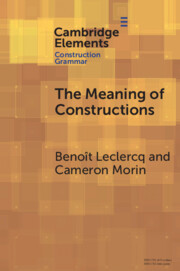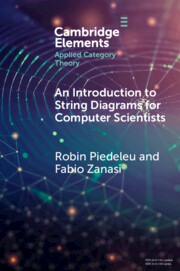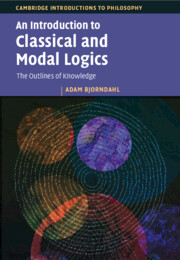Refine search
Actions for selected content:
213 results
Native Chinese readers activate English translations of words during Chinese sentence reading
-
- Journal:
- Bilingualism: Language and Cognition , First View
- Published online by Cambridge University Press:
- 06 August 2025, pp. 1-12
-
- Article
-
- You have access
- Open access
- HTML
- Export citation
4 - Lexicon and Semantics
-
- Book:
- The Balkan Languages
- Published online:
- 31 May 2025
- Print publication:
- 26 June 2025, pp 179-358
-
- Chapter
-
- You have access
- Open access
- HTML
- Export citation
6 - Morphology and Morphosyntax: The Fate of Inflection and the Formation of Paradigms
-
- Book:
- The Balkan Languages
- Published online:
- 31 May 2025
- Print publication:
- 26 June 2025, pp 495-780
-
- Chapter
-
- You have access
- Open access
- HTML
- Export citation
Dual language profiles in Spanish–English bilingual children with and without developmental language disorder
-
- Journal:
- Bilingualism: Language and Cognition , First View
- Published online by Cambridge University Press:
- 23 June 2025, pp. 1-16
-
- Article
-
- You have access
- Open access
- HTML
- Export citation
4 - How Do Children Learn Language?
- from Section I - The Early Years
-
- Book:
- Child Development
- Published online:
- 19 June 2025
- Print publication:
- 12 June 2025, pp 51-66
-
- Chapter
- Export citation

The Meaning of Constructions
-
- Published online:
- 16 May 2025
- Print publication:
- 22 May 2025
-
- Element
- Export citation

An Introduction to String Diagrams for Computer Scientists
-
- Published online:
- 01 May 2025
- Print publication:
- 29 May 2025
-
- Element
-
- You have access
- Open access
- HTML
- Export citation
The language of mechanical support in children: Is it “Sticking,” “Hanging,” or simply “On”?
-
- Journal:
- Journal of Child Language , First View
- Published online by Cambridge University Press:
- 17 March 2025, pp. 1-20
-
- Article
-
- You have access
- Open access
- HTML
- Export citation
2 - Structure Removal
-
- Book:
- German Syntax
- Published online:
- 28 February 2025
- Print publication:
- 06 March 2025, pp 88-111
-
- Chapter
- Export citation

An Introduction to Classical and Modal Logics
- The Outlines of Knowledge
-
- Published online:
- 08 February 2025
- Print publication:
- 21 November 2024
-
- Textbook
- Export citation
17 - Constructions in Typological and Cross-Linguistic Context
- from Part V - Constructions in Sociocultural and Typological Variation
-
-
- Book:
- The Cambridge Handbook of Construction Grammar
- Published online:
- 30 January 2025
- Print publication:
- 06 February 2025, pp 439-468
-
- Chapter
- Export citation
Understanding the meanings of ambiguous noun-noun compounds
-
- Journal:
- English Today , First View
- Published online by Cambridge University Press:
- 30 January 2025, pp. 1-8
-
- Article
- Export citation
Semantic information boosts the acquisition of a novel grammatical system in different presentation formats
-
- Journal:
- Language and Cognition / Volume 17 / 2025
- Published online by Cambridge University Press:
- 28 January 2025, e30
-
- Article
-
- You have access
- Open access
- HTML
- Export citation
Chapter 6 - The Language Problem
-
- Book:
- Otto Neurath in Britain
- Published online:
- 09 January 2025
- Print publication:
- 23 January 2025, pp 154-178
-
- Chapter
- Export citation
4 - Zipf’s Law of Meaning: The Degree Distribution of the Mind
- from Part II - Language
-
- Book:
- Behavioral Network Science
- Published online:
- 08 November 2024
- Print publication:
- 19 December 2024, pp 63-74
-
- Chapter
- Export citation
Chapter 23 - Linguistics and Philology in Dictionaries
- from Part IV - Dictionaries and Domains of Use
-
-
- Book:
- The Cambridge Handbook of the Dictionary
- Published online:
- 19 October 2024
- Print publication:
- 31 October 2024, pp 460-480
-
- Chapter
- Export citation
Topic aware probing: From sentence length prediction to idiom identification how reliant are neural language models on topic?
- Part of
-
- Journal:
- Natural Language Processing / Volume 31 / Issue 3 / May 2025
- Published online by Cambridge University Press:
- 25 October 2024, pp. 936-964
-
- Article
-
- You have access
- Open access
- HTML
- Export citation
Irrealis as modality: evidence from Gιsιɖa Anii
-
- Journal:
- Journal of Linguistics / Volume 61 / Issue 2 / April 2025
- Published online by Cambridge University Press:
- 24 October 2024, pp. 339-368
- Print publication:
- April 2025
-
- Article
-
- You have access
- Open access
- HTML
- Export citation
Why more and less are never adverbs
-
- Journal:
- Journal of Linguistics , First View
- Published online by Cambridge University Press:
- 04 October 2024, pp. 1-29
-
- Article
-
- You have access
- Open access
- HTML
- Export citation
The ‘adverb-ly adjective’ construction in English: meanings, distribution and discourse functions
-
- Journal:
- English Language & Linguistics / Volume 29 / Issue 1 / March 2025
- Published online by Cambridge University Press:
- 27 September 2024, pp. 102-131
-
- Article
-
- You have access
- Open access
- HTML
- Export citation
